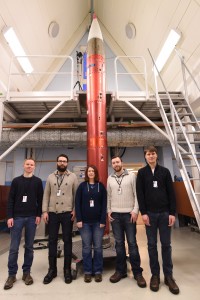Kalium Laser-Experimente unter Schwerelosigkeit

This DLR-funded project is aiming at the demonstration of the laser technology required to perform experiments with ultra-cold potassium. To this end, a laser developed by the Ferdinand-Braun Institute was fiber-coupled and connected to a spectroscopy module developed by us. With the help of this spectroscopy module, the laser can be stabilized onto an atomic transition of Potassium. Such a system will be needed for further space missions tackling the study of atomic mixtures between Rubidium and Potassium.
The special challenge of this project, compared to the modules developed within the MAIUS-project, is the low vapor pressure of Potassium which complicates the generation of an absorption signal for the Laser stabilization.
To circumvent this issue, a mechanism to heat the cell, without compromising the thermal insensitivity of the modules, was developed in our group.
Furthermore, a fiber based splitting unit is set up to connect the different functional parts of the system and to provide an offset frequency stabilization.
The KALEXUS mission has flown on the TEXUS 53 multi-user sounding rocket mission, which was launched successfully on 23 January 2016 at 9:30 am (official press release).
Main Publications
[1] "Autonomous frequency stabilization of two extended cavity diode lasers at the potassium wavelength on a sounding rocket", A. N. Dinkelaker et al., Appl. Opt. 56, 1388 (2017)Funding
The KALEXUS project is supported by the German Space Agency DLR with funds provided by the Federal Ministry for Economic Affairs and Energy (BMWi) under grant number 50 WM 1345.
